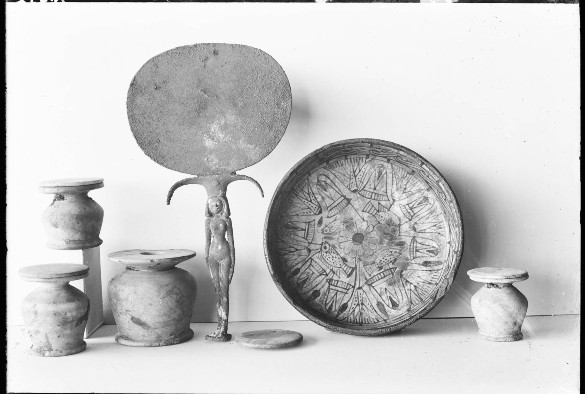
The University of Liverpool’s Garstang Museum of Archaeology, in partnership with National Museums Liverpool (NML), has been awarded £585K funding to locate and make accessible the vast archaeological collections excavated by renowned archaeologist John Garstang.
Reconstructing the ancient past – digital access and visibility of the Garstang distributed collection is part of the Research Infrastructure for Conservation and Heritage Science (RICHeS) programme, funded by the UKRI Arts and Humanities Research Council through the UKRI Infrastructure Fund.
It is one of 31 heritage science projects across the UK that will share £37 million from the first tranche of funding through the RICHeS programme.
The two-year project aims to identify, make visible and accessible, Garstang’s Distributed Collections in an online portal.
The Garstang Museum of Archaeology houses a wealth of artefacts unearthed by Garstang during his extensive excavations along the Egyptian and Sudanese Nile Valley and the Eastern Mediterranean. However, many of these finds were dispersed to more than 100 museums worldwide, including notable holdings at the University of Liverpool and NML.
The distribution of these artefacts has never been recorded, restricting findability, accessibility and usage.
This project addresses the complex challenge of colonial acquisition practice and legacies, making the distributed Garstang archaeological excavation collections globally visible, accessible and usable with countries of origin, Egypt and Sudan, at the core.
Researchers will work to identify, document, and make accessible all Garstang’s finds through a dedicated online portal, available in both English and Arabic.
The project will foster a global network to improve the accessibility and understanding of archaeological finds. By collaborating with repositories and researchers worldwide, the team will identify, document, and share information about these artefacts.
This will enhance our knowledge of material composition, colonial acquisition and lost cultures, especially in politically unstable regions. The goal is to promote best practices for distributed collection management and to increase public engagement with archaeological heritage.
Joanne Fitton, Deputy Director of Libraries, Museums and Galleries, said: “This is a transformational opportunity for the Garstang collection, those repositories and organisations around the world with finds, bringing new public understandings of colonial acquisition practices. Our expert Curator Gina Criscenzo Laycock will be instrumental in identifying and making the collection accessible.
“We are grateful to the AHRC for recognising the potential the collection offers as a key resource for heritage science, and we look forward to working with our partners at National Museums Liverpool to create a community of practice around the collection.”
Ashley Cooke, Lead Curator of Antiquities, World Museum, part of NML said: “For many years I’ve wanted to do a project just like this, so I am absolutely thrilled that we have won funding from the AHRC.
“When I began my training at the University of Liverpool in the late 1990s I realised the problems of utilising the Garstang collection within wider heritage science because of the unmapped distribution and inaccessibility of the archive for those outside of Liverpool. I’m eager to work with other museums, making the Garstang collection and its archaeological archive more visible for researchers globally.”
For more information, visit the Garstang Museum website or go to ukri.org.
Image credit: The Garstang Museum of Archaeology at the University of Liverpool